During these Easter holidays, at least here in Germany, there´s a four day mini-vacation. My clients are mostly off work and so there´s little for me to do than trying to enjoy this almost one week of free days. Well. Almost. Yesterday I´ve completed a day-trip to one of those clients in Bremen. A very interesting story to be published in the next days. Anyway, being in Bremen already, I thought to myself: „Why not combine this work trip with a little history lesson“? And so I did.
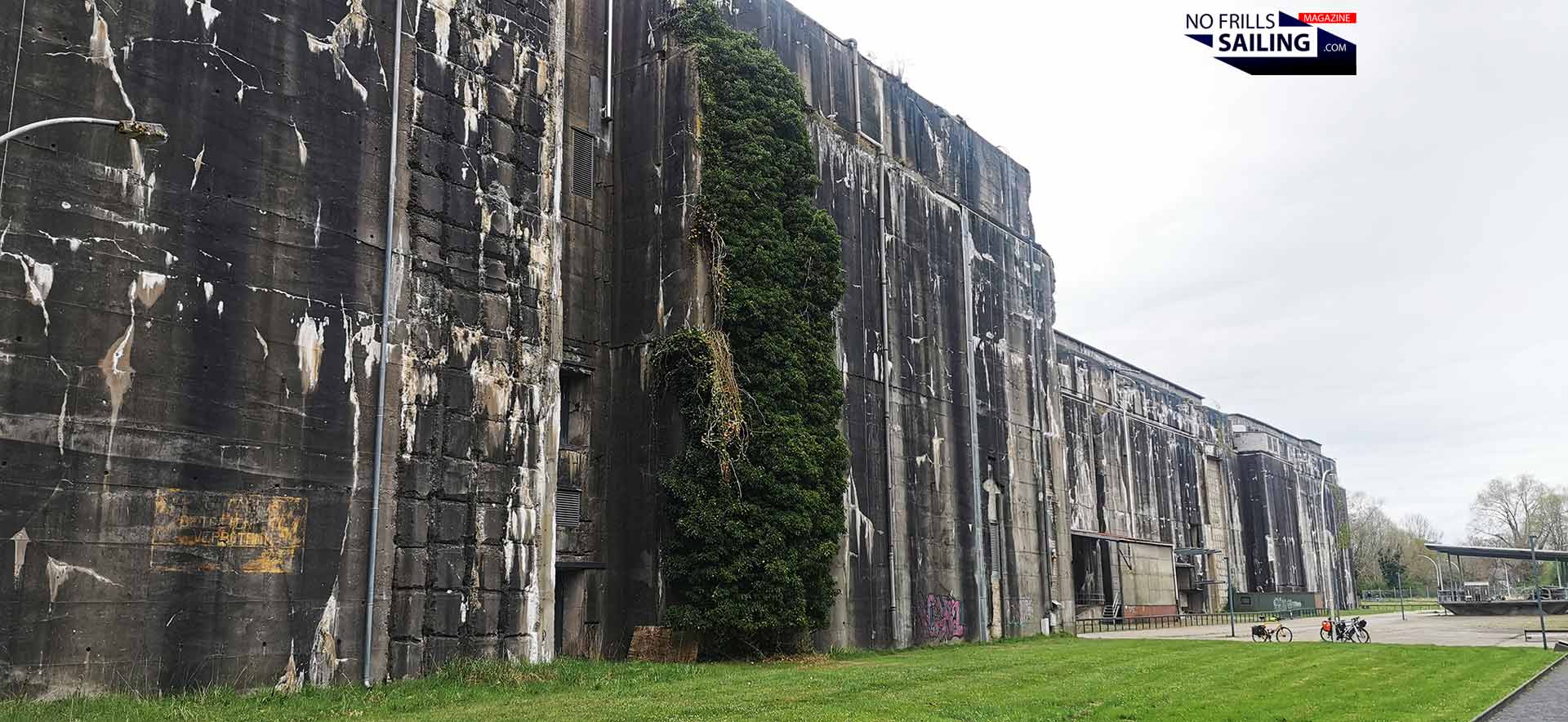
Some 20 minutes outside the city center of Bremen the second largest free standing bunker of Europe is located. The Nazis designated it „Valentin“. As a loyal reader of NO FRILLS SAILING.com you know that I have a soft spot for submarines: In fact, when I was 17 years old and in school, we´ve still had the draft here in Germany. Along with my class mates we were checked and I was ready to volunteer to start a Navy career. But my premise was to be appointed to the submarine force. Which they didn´t: I was too tall. And I was wearing glasses. Well, that´s all history now – so let´s talk about the real history …
Calculated megalomania
Valentin is a breathtaking and absolutely overwhelming site. The sheer data – and also my photographs – cannot convey the mindblowing size of this bunker. It is more than 400 meters long, 70 to 100 meters wide. Well, in essence: The measurements are directly derived from its planned utilization. Unlike other Uboat-bunkers, this one was´t a base for repairing or refueling German subs: It was a shipyard. Valentin was projected to actually building the submarines. That is why it is roughly four U-boats long and four U-boats wide.
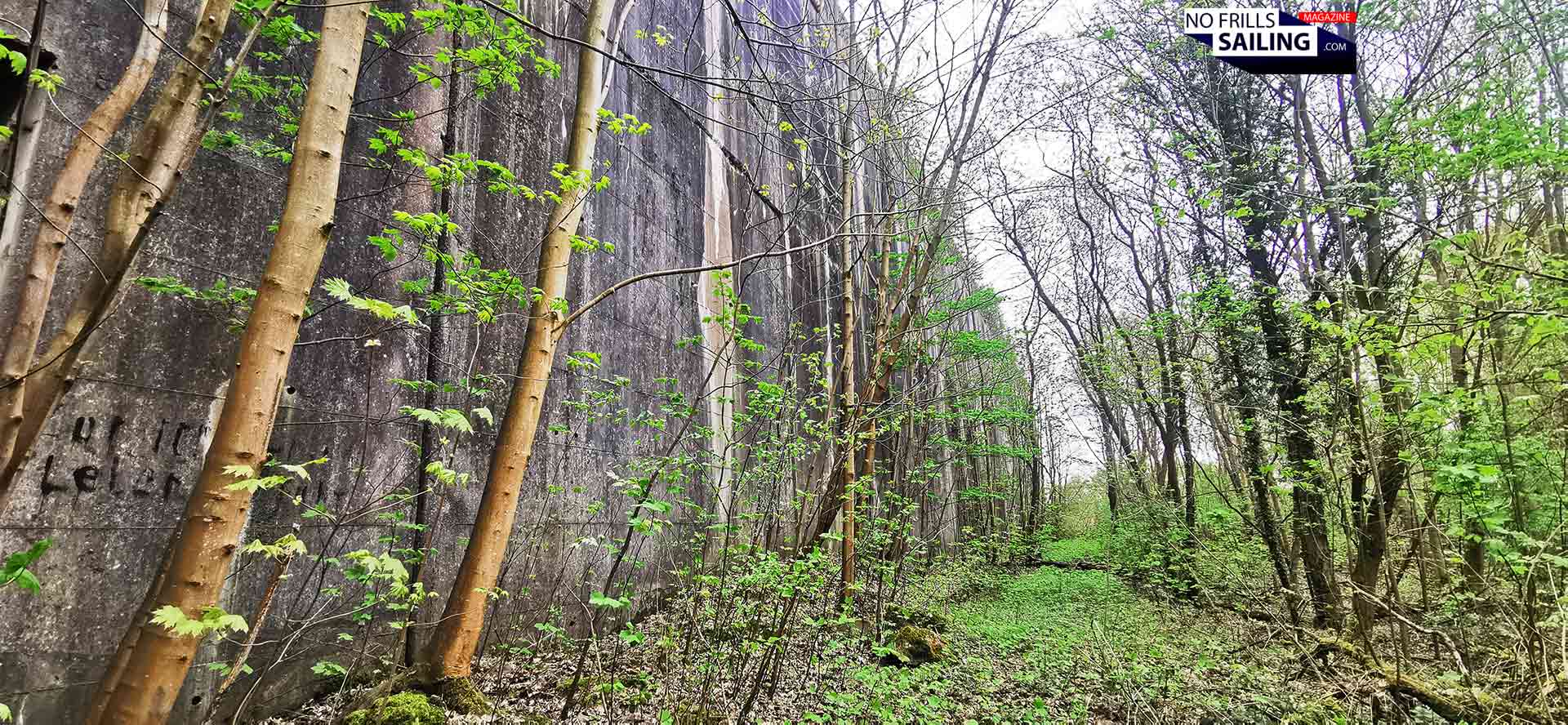
Standing there, it is hard to imagine how the building of this structure was even possible. A forest of birch trees is trying to take back what humans have made out of this area. Albeit, „human“ is a tricky word here: Nothing about Valentin is human. Started in 1943 when allied bombing made operations of a classic shipyard more and more impossible, this colossal bunker of course has been built with forced labor. Meaning, almost all of it, by bare hand. Between 10.000 and 15.000 concentration camp prisoners, many of them Polish and Soviet POVs, were used for the back-breaking slave labor.

One million tons of gravel, 132.000 tons of cement and 20.000 tons of steel had to be combined, mostly in manual work, to build Valentin. It was a massive project, that incorporated not only the 33.000 square meters of the bunker itself, but an area of 4 by 6 kilometers with all the auxiliary workshops and installations. The river Weser (I´m showing this later) was dug out to create a massive artificial cove, where a pierside was then erected. Valentin remained one of the largest building projects of the Third Reich.
Building the Wunderwaffe U-boats
I´ve been to many shipyards myself, mostly those where leisure craft and nice sailing yachts are built. This is the complete opposite: Valentin was a factory of death. One of the main weapons of the Nazis which really had the potential to do serious harm to the Allieds had been the submarine. With the new „Elektro-Boot“ Type XXI, which was in development since 1943, the Nazis hoped to gain an upper hand again in the Battle of the Atlantic, finally being able to cut off Europe from American supplies. This new, indeed revolutionary, submarine was to be built here at Valentin. By the way, the one and only last remaining Type XXI sub of the world can be visited in nearby Bremerhaven, just a 45 minutes drive away from Valentin: A location you should have on your list when coming here to get the complete picture.

Back to the bunker: As classic manufacturing of ships wasn´t feasable anymore due to daily allied bombing raids, the Nazis went for a decentralized production strategy. The Type XXI was already designed in a way so that smaller steel manufacturing companies in the German hinterland could produce the sub´s nine sections. Those were then to be transported via Germany´s huge network of inshore waterways to Valentin. Other large parts and supplies were set to arrive via rail, one can still recognize the large delivery openings and even the tracks.
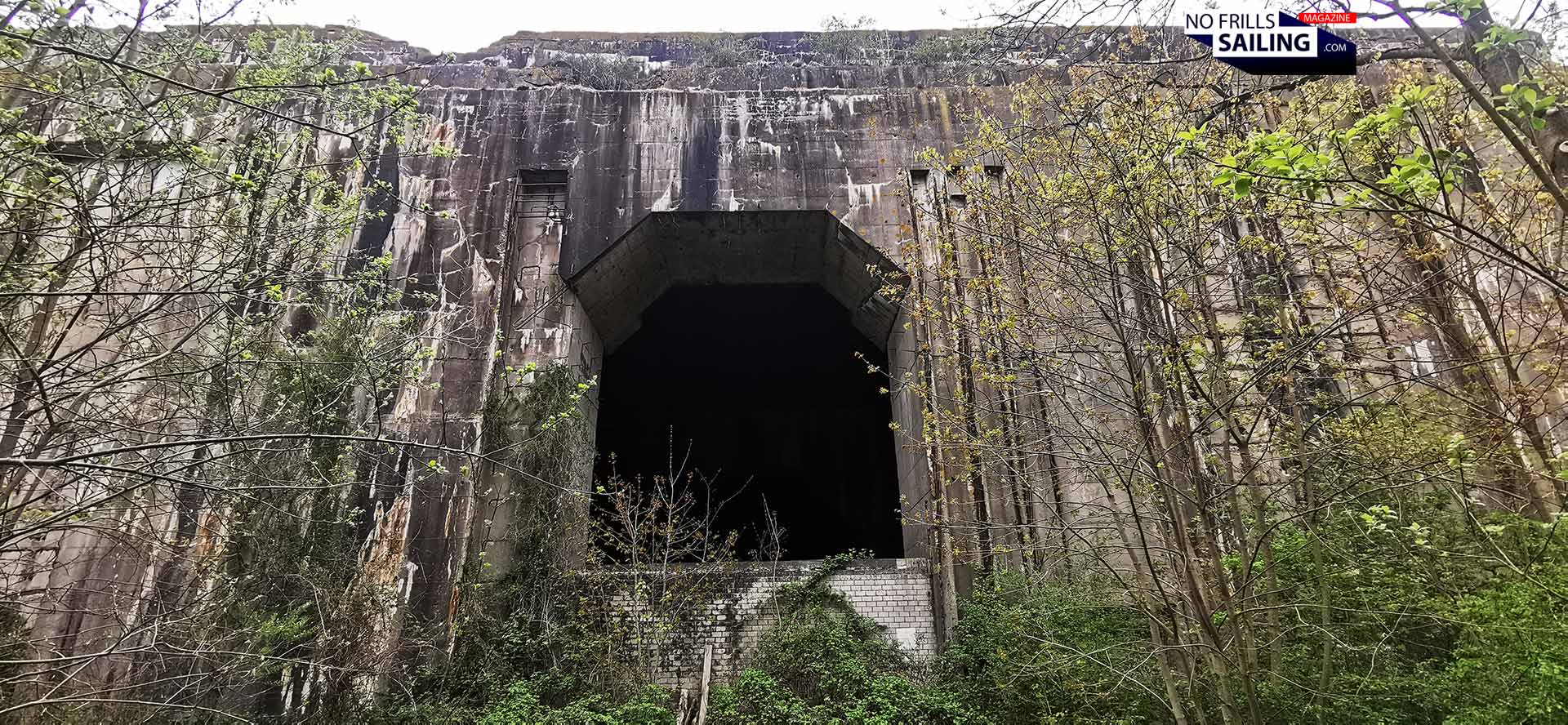
The nine sections would have been put on lorries: Valentin´s interior has a system of lorry-tracks onto which the sections, and later the finished Uboats, would have been moved from station to station. The production process was broken down to 13 tacts, with tact one being the arrival and grouping of the sections and tact 13 the surface and even submerged testing of the fully finished and operational sub. Within the bunker, the nine sections forming one boat would have been transfered from tact to tact thirteen times, with each station adding more compontents, equipment and fittings. The boat went four times back and forth the bunker from station to station, also sideways to enter a new assembly line. All in all, the whole process of assembling one Type XXI submarine was planned to last around 30 days. In full swing, Valentin would discharge one submarine every 48 to 56 hours …
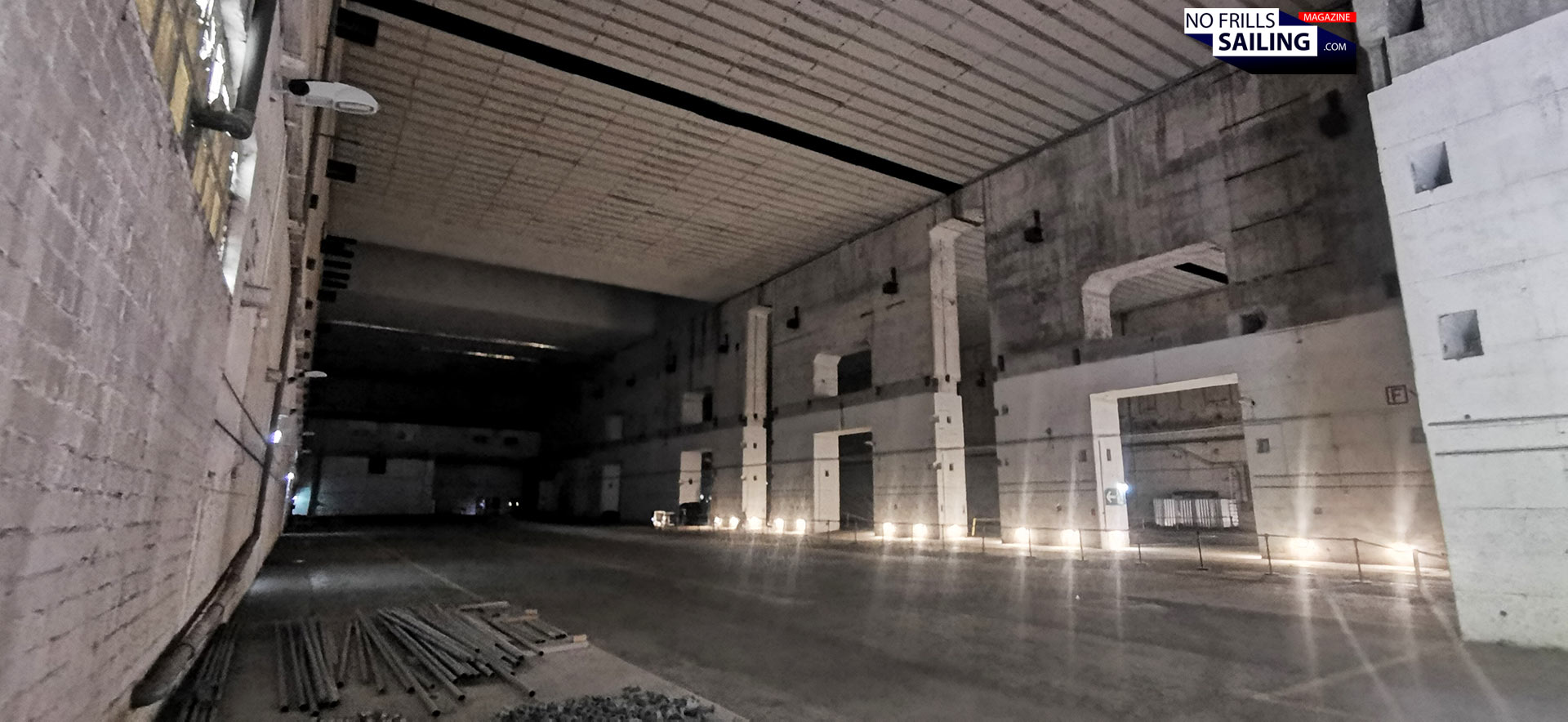
Roughly one half of the bunker´s interior is structurally safe and open for visitors. The ceiling is 25 meters high – my pictures cannot convey these gigantic proportions! Standing inside here makes you shiver in awe, it is truly a dark, very dark site. But as we humans have it in us, the darkness is fascinating. Albeit being completely empty showing only the bare concrete shell, you can spot the recesses in the bunker´s walls to imagine where supporting structures, rigs, platforms and the slip´s structures would have been set up. Type XXI has a height of some 11 meters including its sail, the bunker has nearly double that height …

Valentin wasn´t the end. In late 1944 the High Command decided that even this mega-structure and its projected output of 15 boats per month wouldn´t be sufficient to funnel enough fresh boats to the Atlantic Ocean. Adjacent to Valentin groundworks began to build a second bunker that size, doubling its production capacity. If you haven´t already been shaking your head in sheer disbelief, now it´s about time.
Taken out by the Tallboys
Well, that´s for the theory. In reality, Valentin was never finished. Not a single U-boat section arrived, let alone, not a single finished submarine left. The Allieds perfectly well knew about the construction site at an early stage: It´s gigantic size didn´t go unnoticed by British and American intelligence. But they decided not interrupt the building process all-too soon as the project was binding huge resources, material and personnel. If bombed too soon and abandoned by the Nazis, those resources would maybe re-funneld to active war efforts or have more direct influence. So they waited and watched. Also watched the slaves, which is the cynical and tragic side of the story. They waited, until Valentin had been finished at around 90 percent. Then the bombers took off.

Starting in February 1945 – you already see that the war´s end in three months was already on the horizon and it was clear for everyone that in principle the war was over – British and American air forces launched three raids on the bunker. Of course, no ordinary bomb could harm the up to 7 meters thick walls or even penetrate the ceiling of this bunker: It was made to withstand most contemporary bombs of that time. But the British had a weapon at their disposal that could do the job: Their 4.5 tons special „Tallboy“ bomb, which already took out battleship TIRPITZ in 1944, was a weapon capable of deep penetration. It was dubbed the „bunker buster“.

There is a front section of one Tallboy on display, see picture above. This was a non-exploding test bomb dropped on the bunker. Just the nose shell of this weapon shows the size of this one. And the „Tallboy“ wasn´t the end: Later, the heaviest ever used conventional aerial bomb of the war, the „Grand Slam“, weighing some 10 tons, was also dropped on Valentin. There are several hits, still clearly visible: Some pounded through the ceiling, some turned it into granulate.
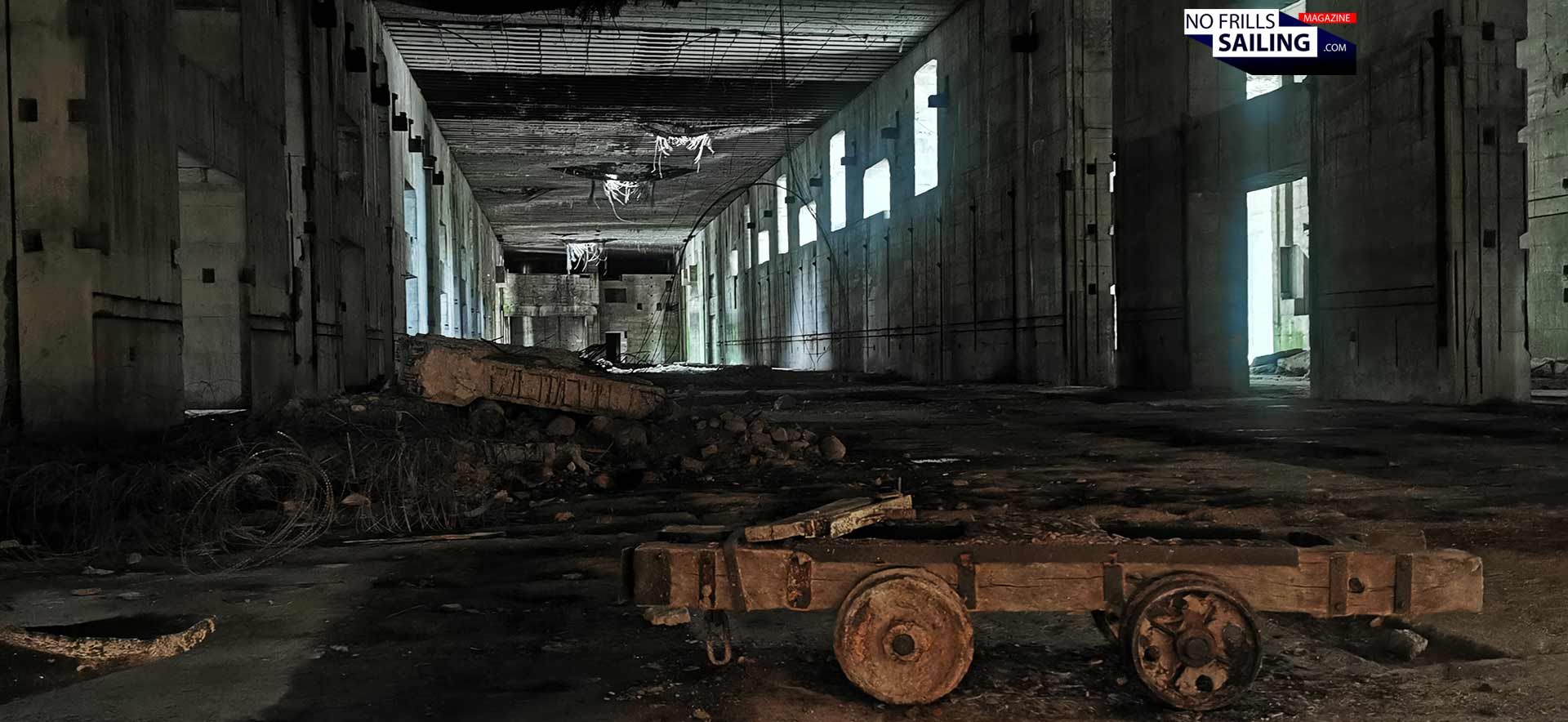
The undersides of these bomb craters are dubbed „dead men“ due to their resemblance. Hit hard by the bunker busters, all construction works were halted in March. Maybe the bunker itself could have been repaired, the uncovered and completely destroyed surrounding infrastructure couldn´t. Cleaning up the site was halted just one week after the third and last bombing. Valentin was a ruin. Still today more than one half of the bunker is cordoned off: Hazard of falling stones and collapsing structures. One can see the shimmering daylight through the craters in the distance. Apalling.
The end of the story
I walk the interior for half an hour, try to imagine, try to grasp the size. Fascination for this engineering and constructional marvel is fighting inside of me with the haunting images of the indescribable suffering of the thousands of prisoners who had been worked to death here. The end of the story is tact 13, the last of the production processes of a Type XXI: The test pool.
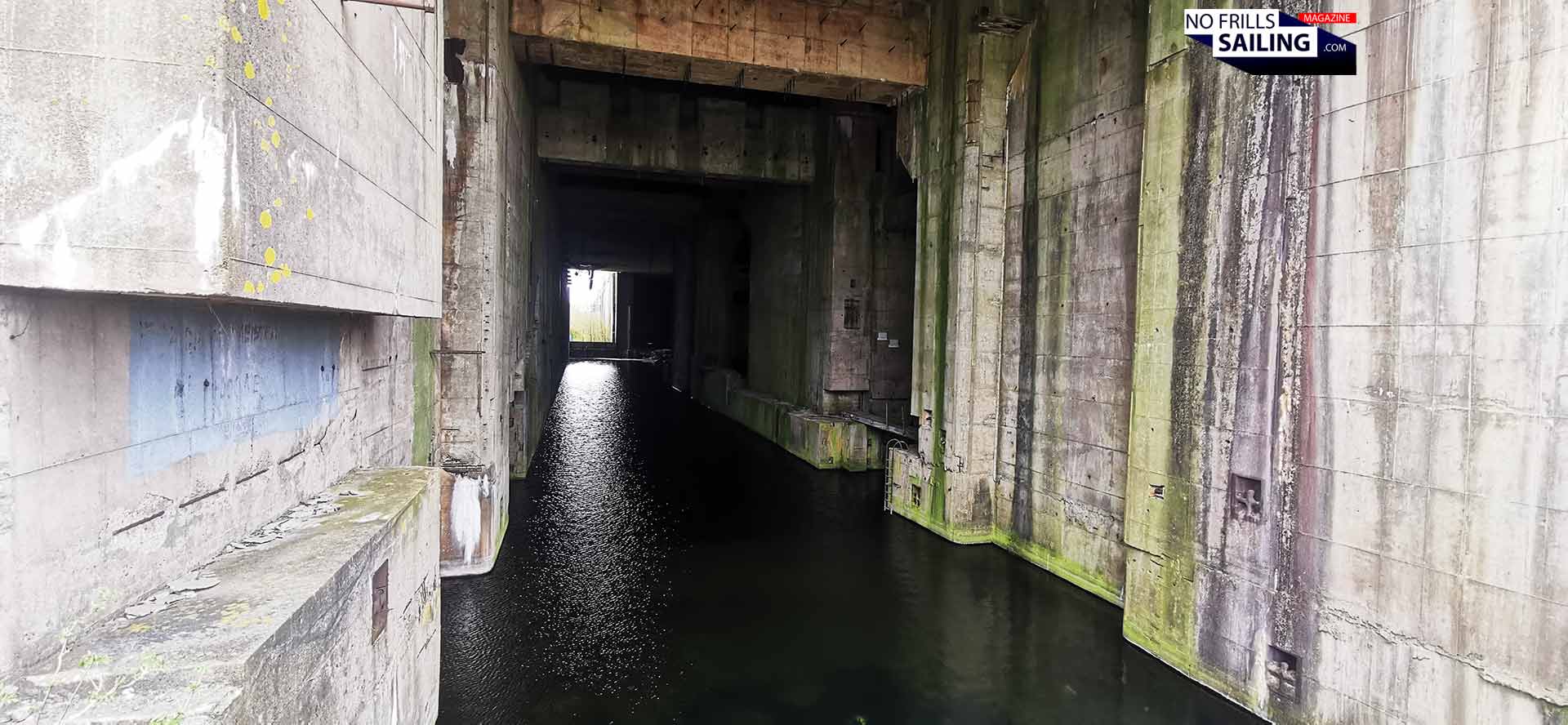
Here in this huge area, a finished submarine would have seen water for the first time. The whole hall would have been sealed and made watertight. Huge pumps could fill up the hall, simulating a dive. The sub´s diving tanks, periscope, snorkel and all machinery would have been tested here thoroughly. A dive as deep as 14 meters – persicope depth – would have been possible. After successfully completing inspection and approval, water would discharge to the sea-level of the river Weser.
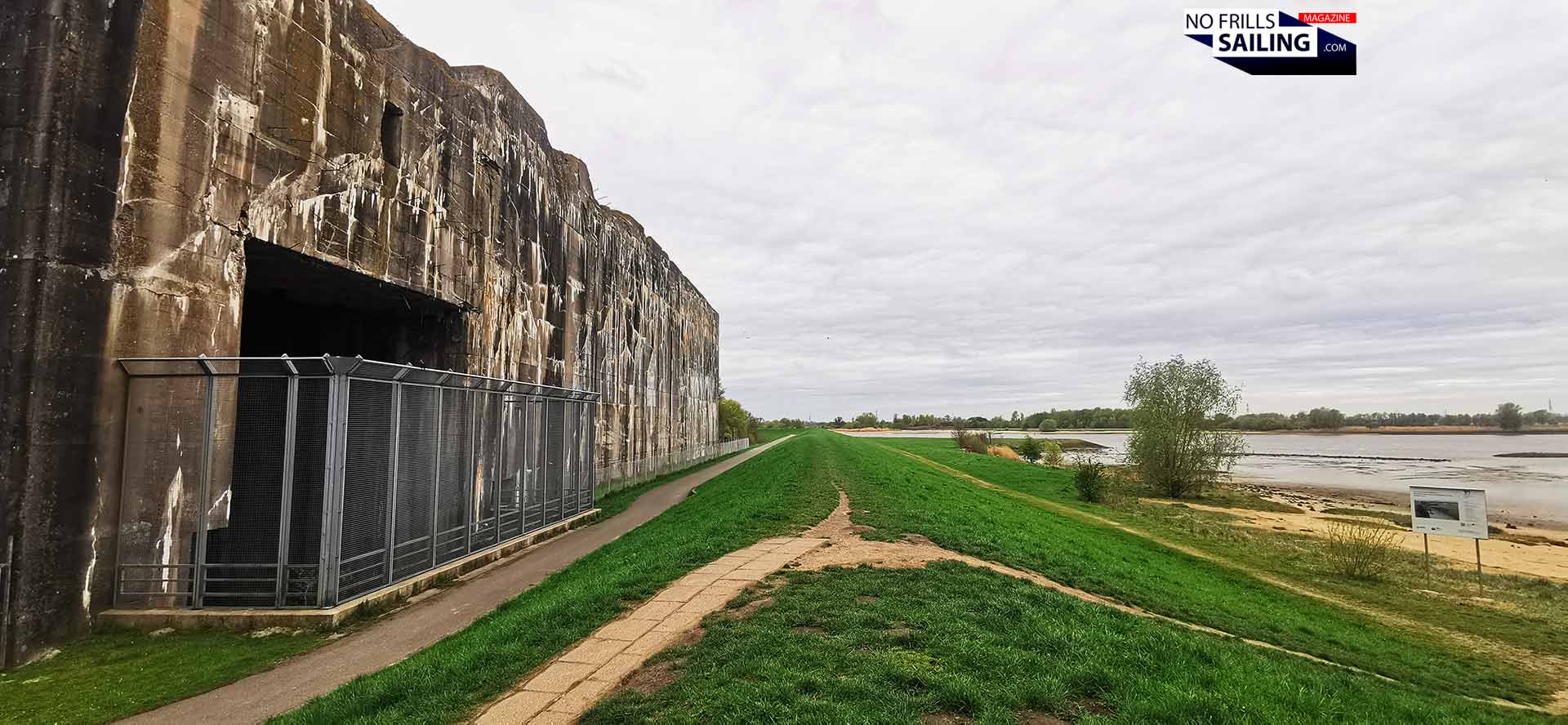
Floodgates at the outside of the bunker – still visible – would have opened and the submarine would have left the shipyard, embarking to its first deadly mission. After leaving the bunker´s interior and walking around the 419 meters long blackened wall, I end where the boats would have left the premises as well. A modern levee is protecting the area from high water. Still, unbelievable to imagine …
What remains to be learned
So, what´s in here to learn? Well, apart from the fascination which is radiant in places like these, the stupidity and insanity of war is what striked me most here at Valentin. The huge amount of energy, brain and labor that went into imagining, constructing and building this bunker, the sheer amount of suffering and death. And for what? For nothing. A shipyard of horror that never build a single ship. A submarine bunker that caused more dead workers than sunk ships. Such a terrible waste of everything. As much as I love delving into history, submarines particularly, as much grounding and sobering it is.
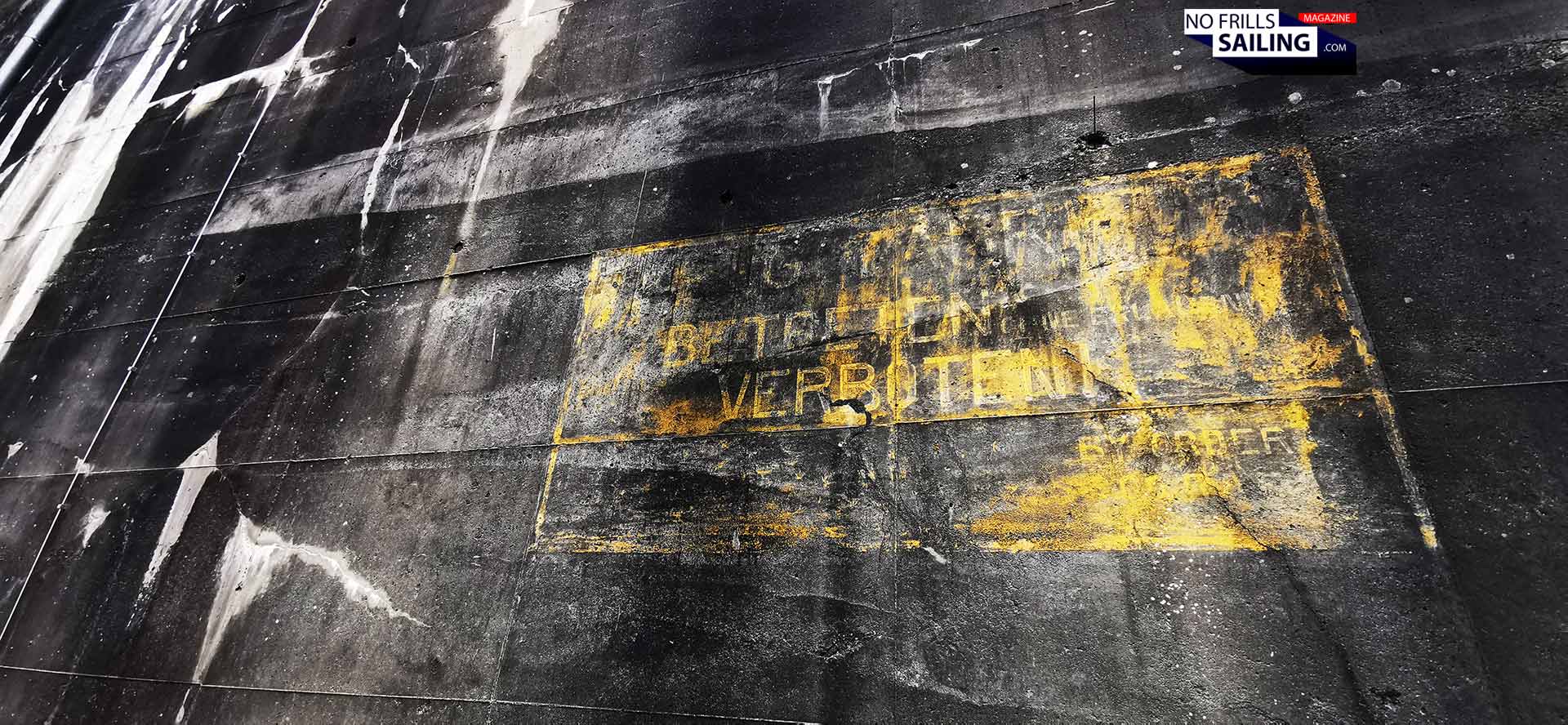
I hope you all have lush, calm and peaceful Easter Holidays, dear readers. Enjoy your free time with your family, your loved ones and friends. Be happy to live in peace, think of those who haven´t got this privilege. The trip to Valentin was certainly a two-sided sword. But that´s what life is, right? Anyways, I am looking forward to visit more shipyards soon: Those, I promise, will manufacture friendly boats made for bringing people together – which is, what seafaring and sailing should be all about. Peace, my friends!
Like my submarine-related articles? Here are some more:
Soviet underwater sniper: Walkthrough in a Tango-Class
How to berth a submarine
Dive, Aye! I´m actually going down with a real sub!
